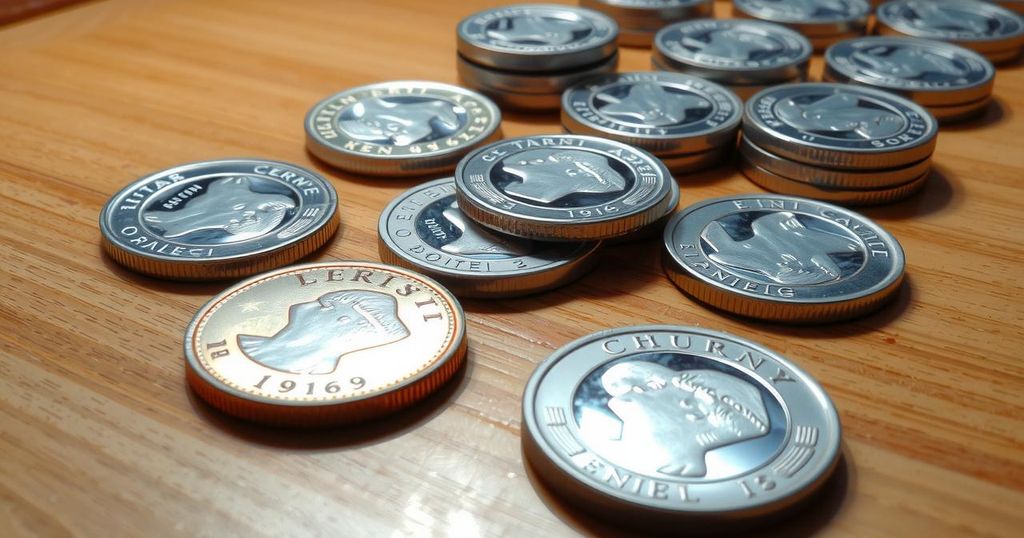Argentina’s central bank accelerates dollar sales to stabilize the peso amid uncertainties over an IMF deal. Efforts led by President Milei include austerity measures, but rebuilding reserves remains challenging. The exchange rate gap between official and black market rates has widened, with inflation still exceeding 2%.
Argentina’s central bank is increasing dollar sales to stabilize the peso amid global economic uncertainty and challenges related to a new IMF agreement. Over the last two rounds alone, the bank sold more than half a billion dollars, reversing a six-week period of net dollar purchases. This effort comes as Argentina grapples with a significant deficit in foreign currency reserves, which it has struggled to rebuild.
President Javier Milei’s administration has gained favor with investors since implementing a stringent austerity program aimed at achieving a “zero deficit.” However, the pace of replenishing foreign reserves has been slow, and Milei’s push for a new IMF program is critical to support government finances, which have suffered from extensive fiscal deficits and overspending over the years.
Despite a robust performance in 2024, uncertainty surrounding the IMF talks has added pressure to the peso. Currently, the official exchange rate stands at 1,068.5 pesos per dollar, while the black market rate reaches 1,260, creating an 18% discrepancy. This gap had significantly narrowed late last year but has since widened again.
Juan Franco, chief economist at Grupo SBS, noted that market uncertainty influences both the expected trends for the exchange rate and demand for parallel dollars. He pointed out that prices for dollar futures contracts are under pressure, indicating a potential rise that exceeds the government-mandated controlled devaluation rates.
On a particularly notable day, the central bank sold $474 million, marking one of its largest single-day sales under President Milei’s administration. Roberto Geretto of Adcap Asset Management described this day as one of the “worst days of the Milei era,” although he considers it potentially an isolated incident rather than a shift in a broader trend.
When President Milei assumed office in December 2023, Argentina’s net foreign currency reserves were minus $11.2 billion. Since then, efforts have led to a $7 billion improvement, with reserves now approximately $4 billion in negative territory. Furthermore, Milei is promoting a new loan program with the IMF geared towards decreasing Treasury debt with the central bank, although the agreement is yet to be finalized.
The Argentine government intends to gradually lift capital controls, contingent on obtaining fresh IMF funding, while continued efforts must focus on reducing inflation, which has been consistently above 2% monthly even amid an overall downturn under Milei’s policies.
The Argentine central bank’s increased dollar sales aim to stabilize the peso amidst uncertainty linked to IMF negotiations and slow recovery of foreign reserves. President Milei’s stringent austerity measures have garnered market support, but significant challenges remain, including high inflation and a substantial gap between official and black market exchange rates. Maintaining investor confidence and successfully negotiating with the IMF will be crucial for Argentina’s fiscal stability moving forward.
Original Source: money.usnews.com






